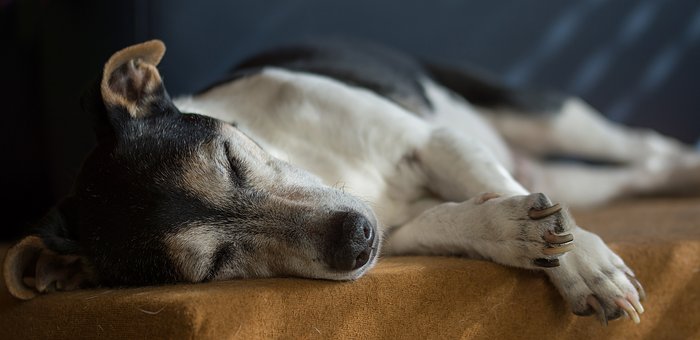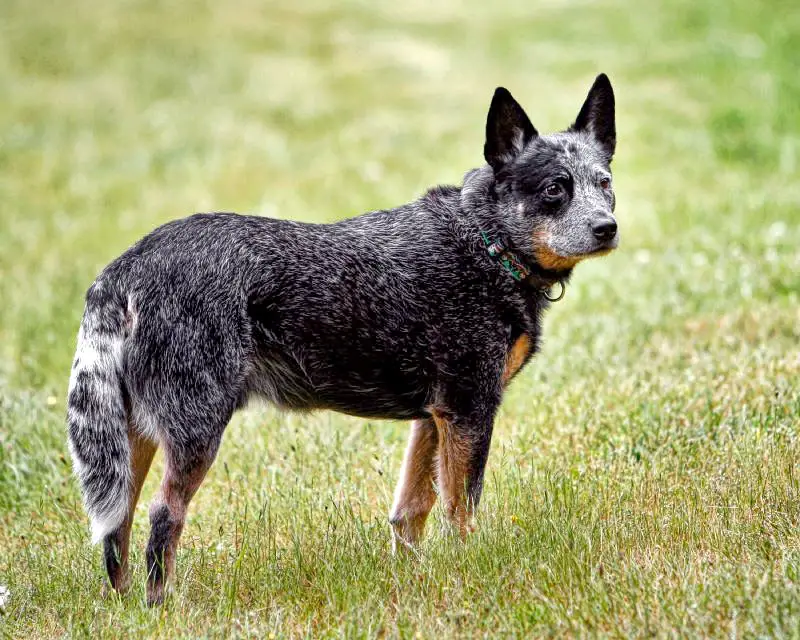Cats and dogs are notorious enemies. However, they can sometimes get along if you’re careful when choosing the breeds and socializing both animals.
While socialization is beneficial in many cases, it isn’t a cure-all. Some breeds aren’t suitable for families with cats.
If you have a cat, here are the breeds that we recommend avoiding if you have a feline:
Table of Contents
1. Greyhound
Greyhounds were bred to chase things. These strong instincts have been retained and specialized through years of breeding. Even Greyhounds that are primarily kept as pets today still have profound chasing instincts.
These instincts make them inappropriate to have in homes with cats. You can train out chase instincts. If the cat starts running, the Greyhound’s instincts will kick in – even if they’ve known that cat their whole life.
Greyhounds are sighthounds, which means they track based on sight. When they see something run, they chase it.
Plus, because Greyhounds are so fast, it is often difficult for the cats to get away from them. Therefore, they are one of the more dangerous dogs as well. Not only will they chase the cats, but they will often catch them too.
2. Jack Russell Terrier

Terriers usually aren’t a good option for homes with cats. Jack Russell Terriers fall into this category.
While these dogs are small, they are mighty. They were initially bred to chase small animals – and it doesn’t take much imagination to transfer this into chasing cats.
Jack Russell Terriers are nearly impossible to socialize with cats. They love to chase just about anything. If the cat runs, they’ll likely chase them. Even if they don’t run, the Jack Russell may decide that they look like prey, which will prompt chasing.
Jack Russell Terriers have one of the highest prey drives, so they are not the best option to have with cats in the least.
3. Australian Cattle Dogs

Australian Cattle Dogs have very high prey instincts. Herding instincts are a bit complicated – they’re part of the hunting instinct procedure. Naturally, when hunting prey, dogs would go through a stalking period before they actively start hunting their prey.
In herding dogs like the Australian Cattle Dog, this instinct has been pushed to the extra. Therefore, herding dogs stalk their prey but rarely ever start hunting it.
However, that doesn’t make them a good choice for homes with cats. Many Australian Cattle Dogs will attempt to herd and chase cats – which the cat likely won’t appreciate. While they don’t permanently physically harm the cat, they can get carried away and hurt them, especially since they’re smaller than most animals they were raised to herd.
Some Australian Cattle Dogs do get along fine with cats – but these are usually the canines raised alongside cats. If you keep your dog around cats from the time they are a puppy, they may get along with them.
Otherwise, this is an inferior breed to have in a cat-friendly home.
4. Siberian Huskies

Out of all the dogs on this list, Siberian Huskies are mainly known for harming cats. They have a solid prey drive, which makes them unsuitable to have around felines. They can sometimes live harmoniously with cats if they are raised around them, but this is rare.
They tend to be very exuberant dogs, which means that playtime with a cat can quickly end badly.
Siberian Huskies are a working and hunting breed – first and foremost. Their strong instincts are one reason that they are commonly bad with cats. They can’t help themselves when it comes to chasing things!
Often, we recommend avoiding Siberian Huskies if you’re planning on having cats (or already have them). While some will get along with felines, you never know what you’re going to get. Therefore, if you’re set on having cats, you’re better off choosing a breed that is a bit more reliable around your beloved feline.
5. Scottish Deerhound
Scottish deerhounds are enormous. They are also sighthounds, which means that they like to chase things. They were bred to see their prey animals and hunt them down, which means they absolutely will chase down a cat when given a chance.
Their large size makes them particularly dangerous. If they caught your cat, they could do quite a bit of damage. However, it is also true that they can do a lot of damage to others and your property when chasing a cat.
They often knock over furniture and people when they have their eyes set on a fleeing cat. Because they’re so large, there isn’t much you can do to stop them either.
Even with heavy training, these otherwise laid-back dogs often can’t help but chase cats. We recommend avoiding them for owners with felines – as well as those who plan on getting them in the future.
6. Weimaraner
The Weimaraner is another hunting dog that isn’t suitable for cats. They will often chase just about anything. That’s just in their nature. This includes cats, even if you’ve attempted to train and socialize them properly.
When they see a cat running, they often can’t help themselves. Even if they’ve lived with cats for years, it doesn’t take much for their hunting instincts to kick in.
Weimaraners can live with cats in some circumstances. Their instincts aren’t as powerful as some of the other options on this list. Therefore, they aren’t necessarily as dangerous as some other breeds. Still, they aren’t reliable with cats.
While some individuals may be trained to get along with felines, others will find it impossible. If you’re set on having cats in the house, this can be a considerable problem. You likely won’t know where your particular dog falls until you introduce them to a feline.
This breed is not good with cats. If you have a cat, there are plenty of better breeds out there. Though, if you’re set on owning a cat and a Weimaraner, you might have a chance.
(This applies to the well-known short-haired Weimaraner as well as the less common long-haired Weimaraner!)
Conclusion
Any dog with strong prey instincts probably isn’t going to be suitable for homes with cats. In many cases, these dogs will interpret cats as prey animals. When a cat starts running around, dogs’ hunting instincts will break into chase mode.
While we’ve included some of the dogs with the strongest instincts in this article, others are. If a dog was historically used for hunting purposes, it probably isn’t a good option. Many hounds are okay since they track – not chase.
Sighthounds are an automatic no-go, though. After all, they were bred to chase things. Don’t expect them to do otherwise.
Luckily, many breeds are good with cats. Many of these were bred to be companion animals, which means their hunting instincts have been suppressed. Others have been bred for other purposes – but not hunting.

